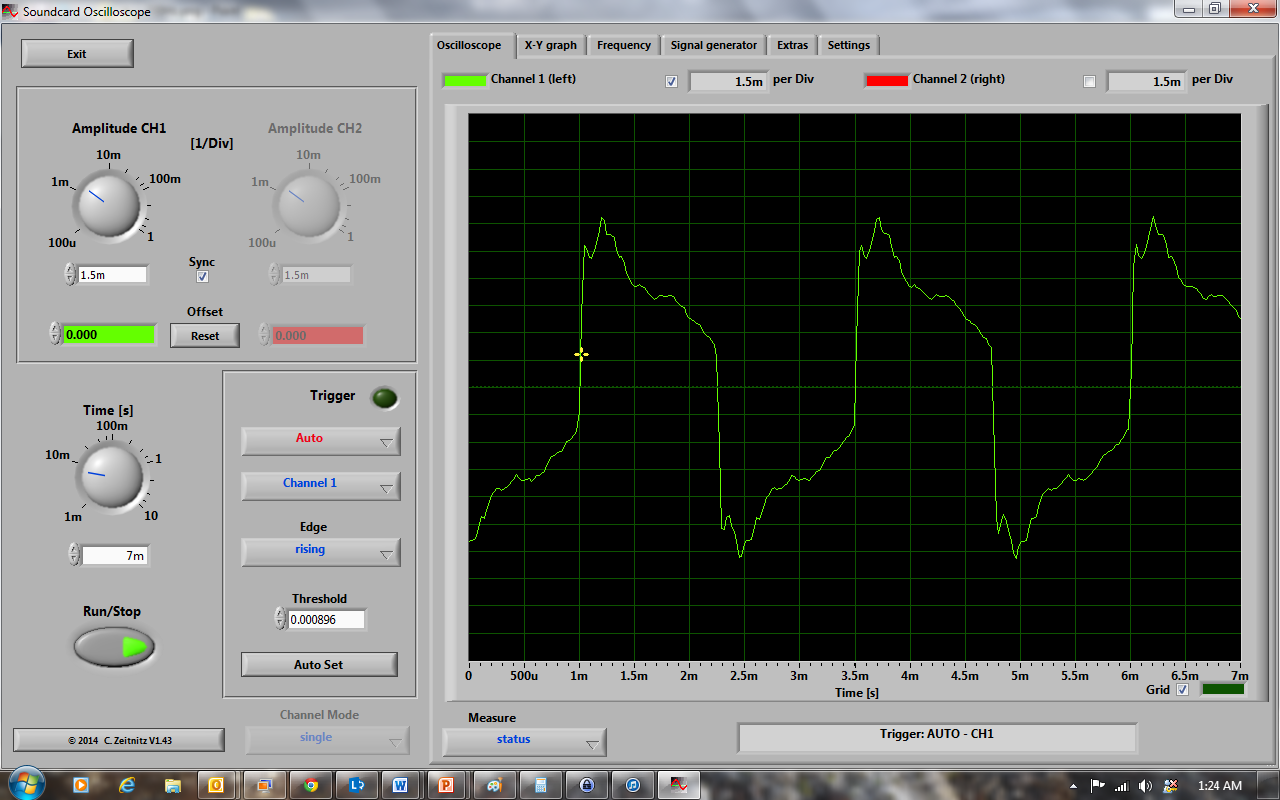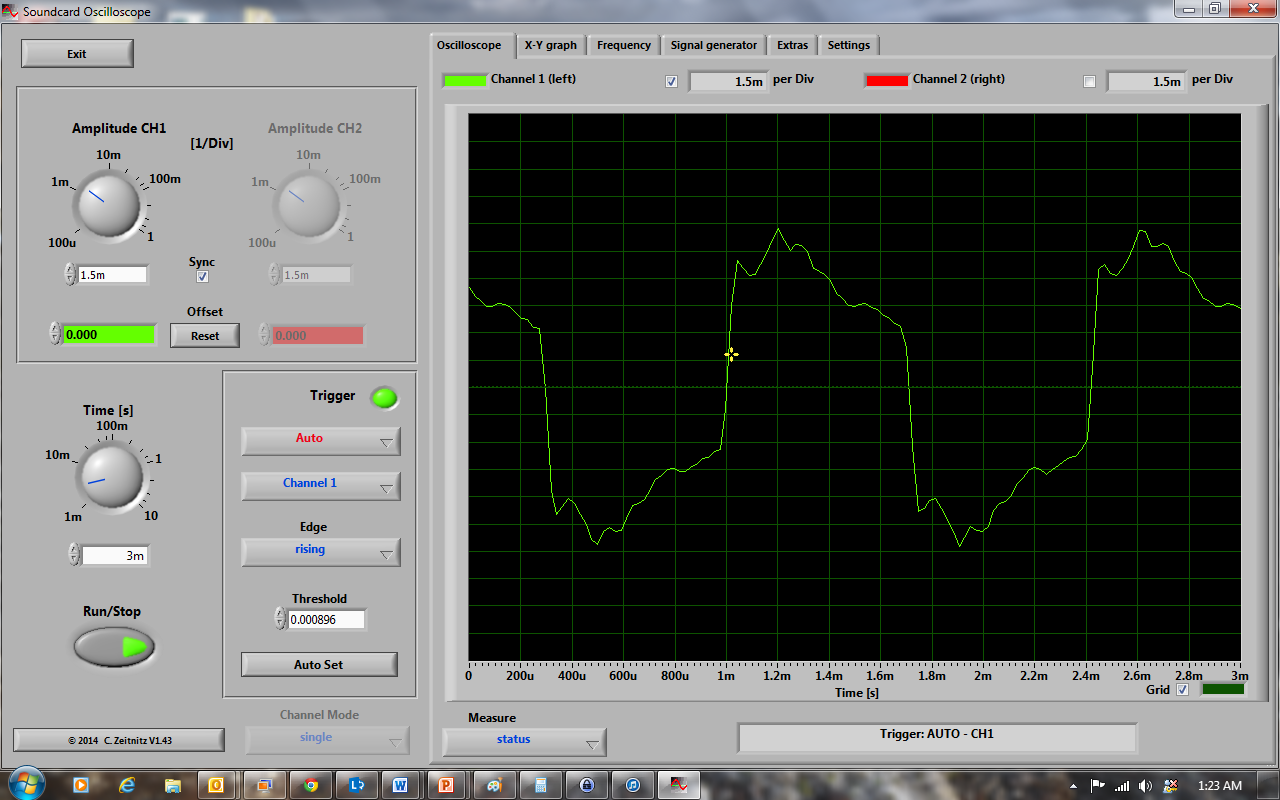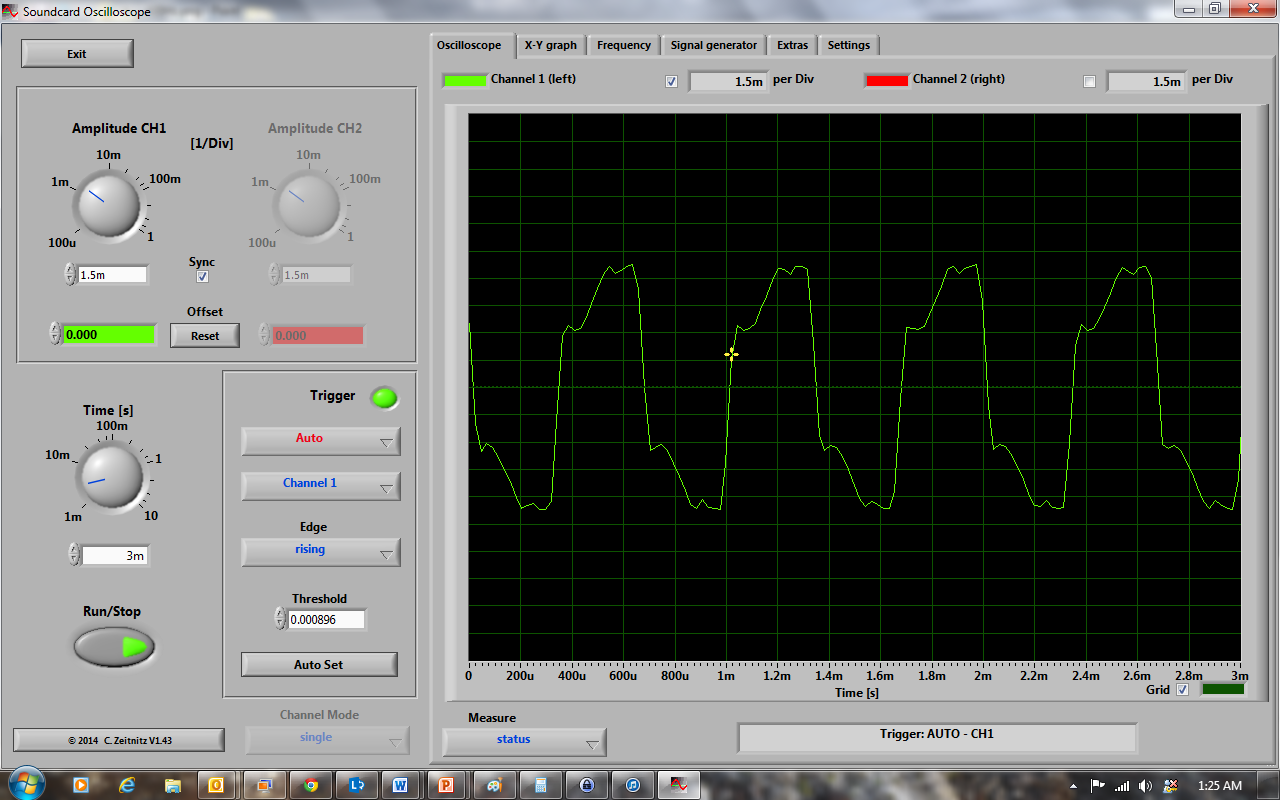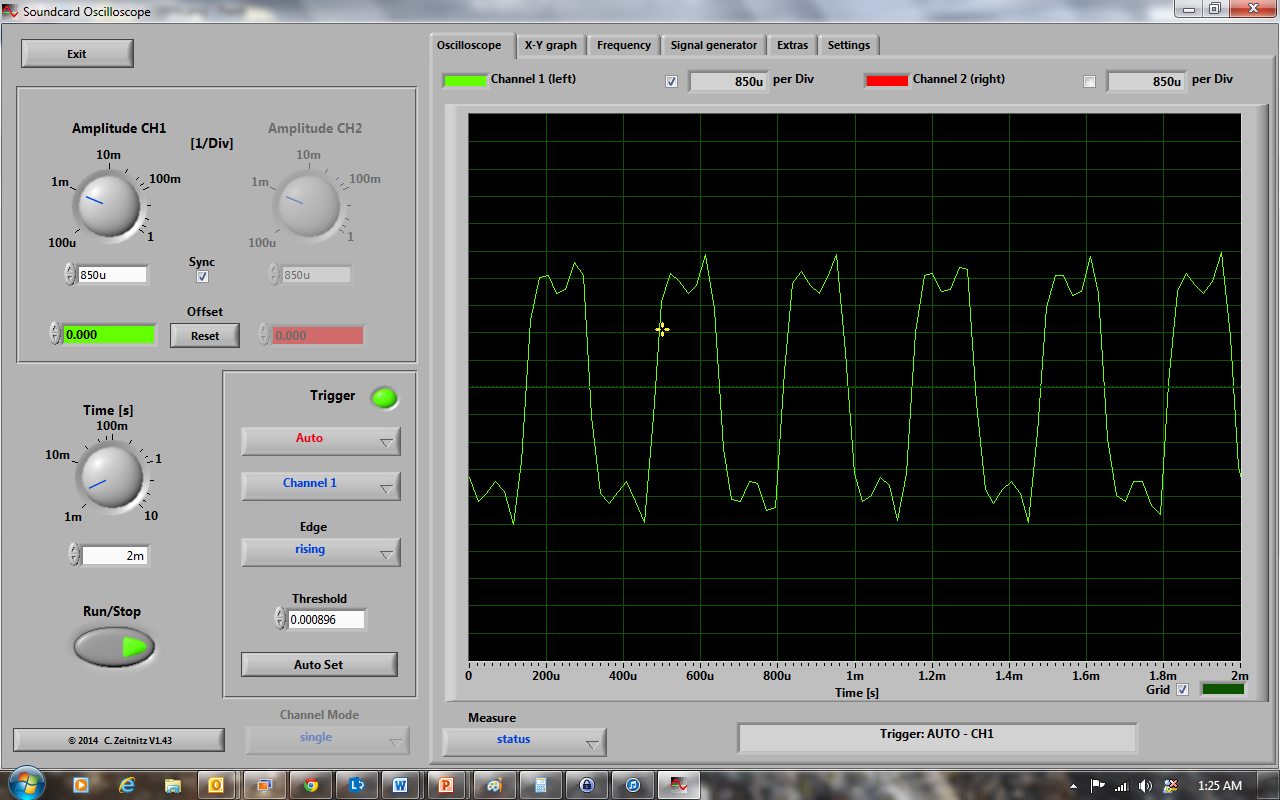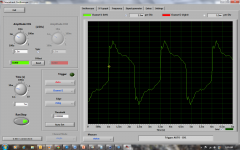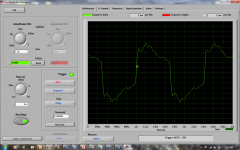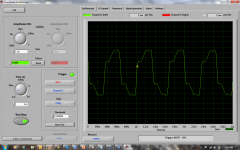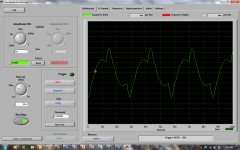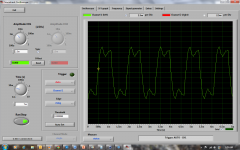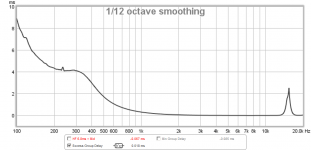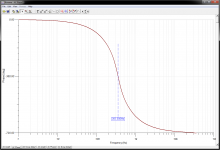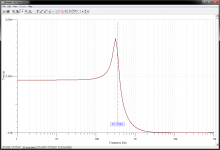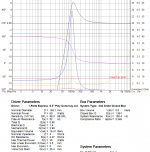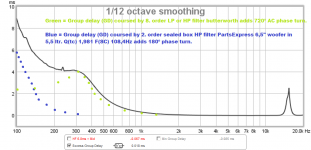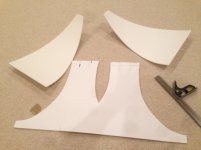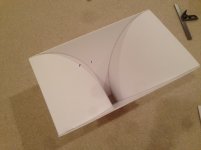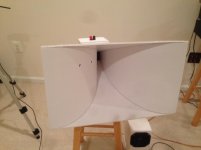Byrtt,
I think my next step is to try a square wave with one of my Nautaloss speakers that has a the TC9FD. I know those speakers are very flat and have excellent flat phase as well. Your square waves look really good - what driver are you using?
Like to see TC9FD/Nautaloss squarewave tested.
Post 218 in reality is to show it's relative easy to navigate XSim after 10 minutes trial, and you can spare time using your old measurement from REW injected and see how they perform regarding squarewaves, instead of making new setup/measurements as bwasco explained. In post 189 bwasco explain how relative easy it's to setup in XSim a amp and driver, then assign your real measurement curves from actual measurements to that driver and then you can run the square wave sweep really easy as i did in picture 3/4 in post 218.
To not have misunderstandings in post 218 i didn't measure own drivers, the plots is from an example file in the program as showed in picture-1.
Post 217 is my concern if we need correction files for devices in chains to see if trusting our measurement for squarer waves is correct. Need some time to make trials and get back.
Trynergy Squarewaves with no miniDSP
Similarly, this is straight from soundcard to TPA3116D2 amp (mo miniDSP). I moved the mic to the plane of the mouth exit. It seems to be better. This is just the 3FE22.
350 Hz:
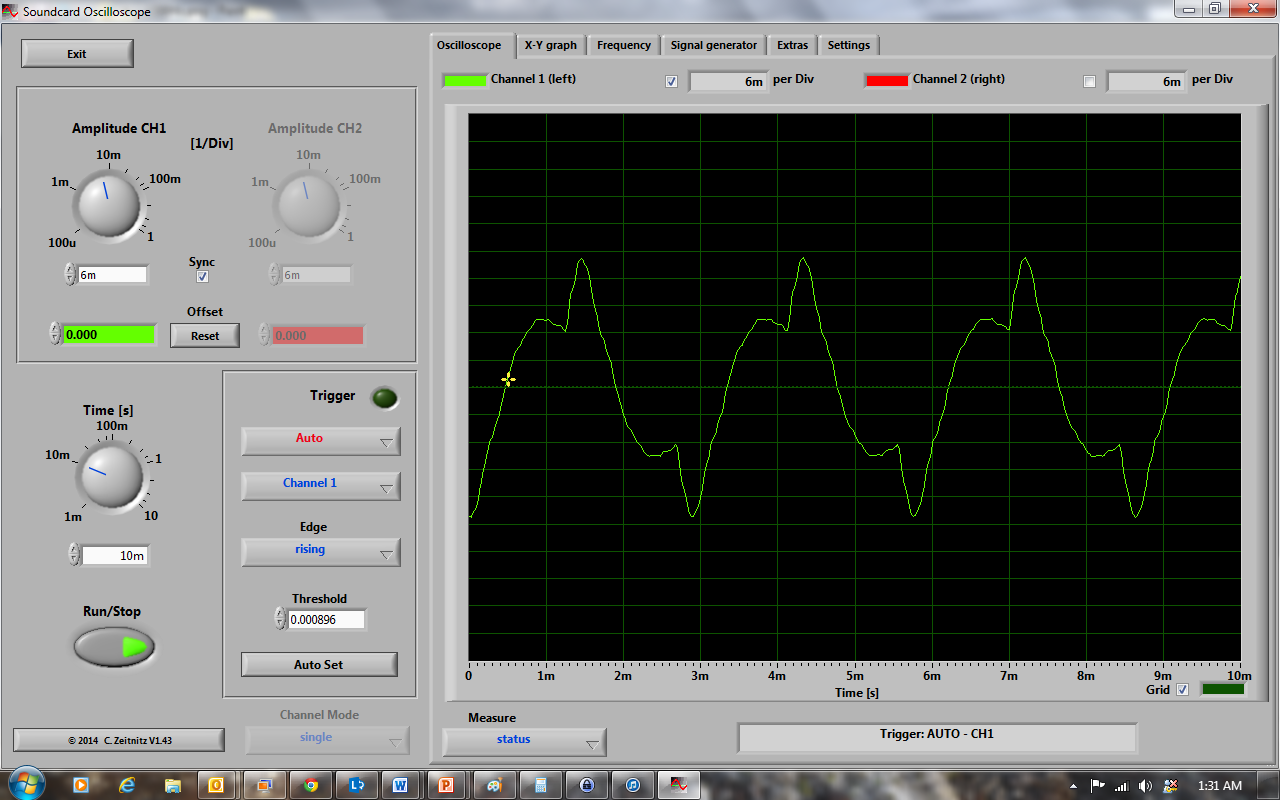
700 Hz:
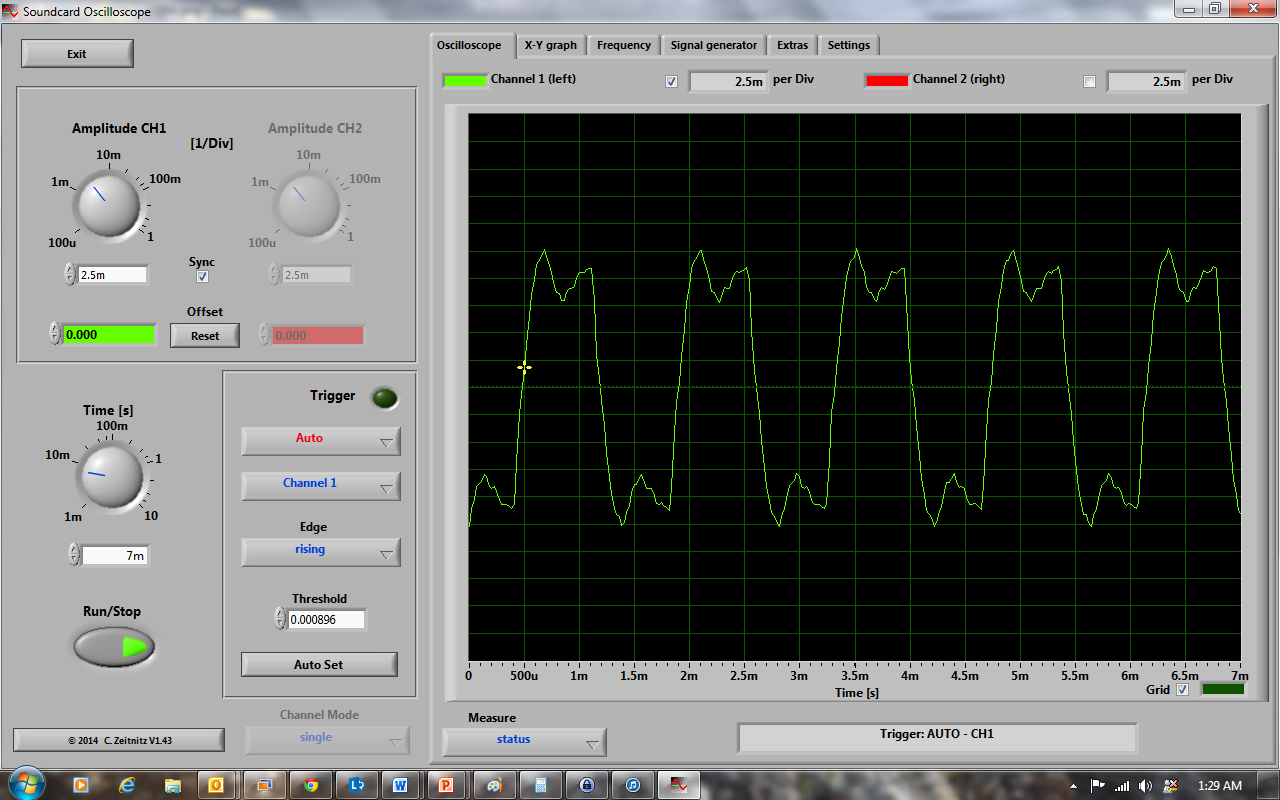
1500 Hz:
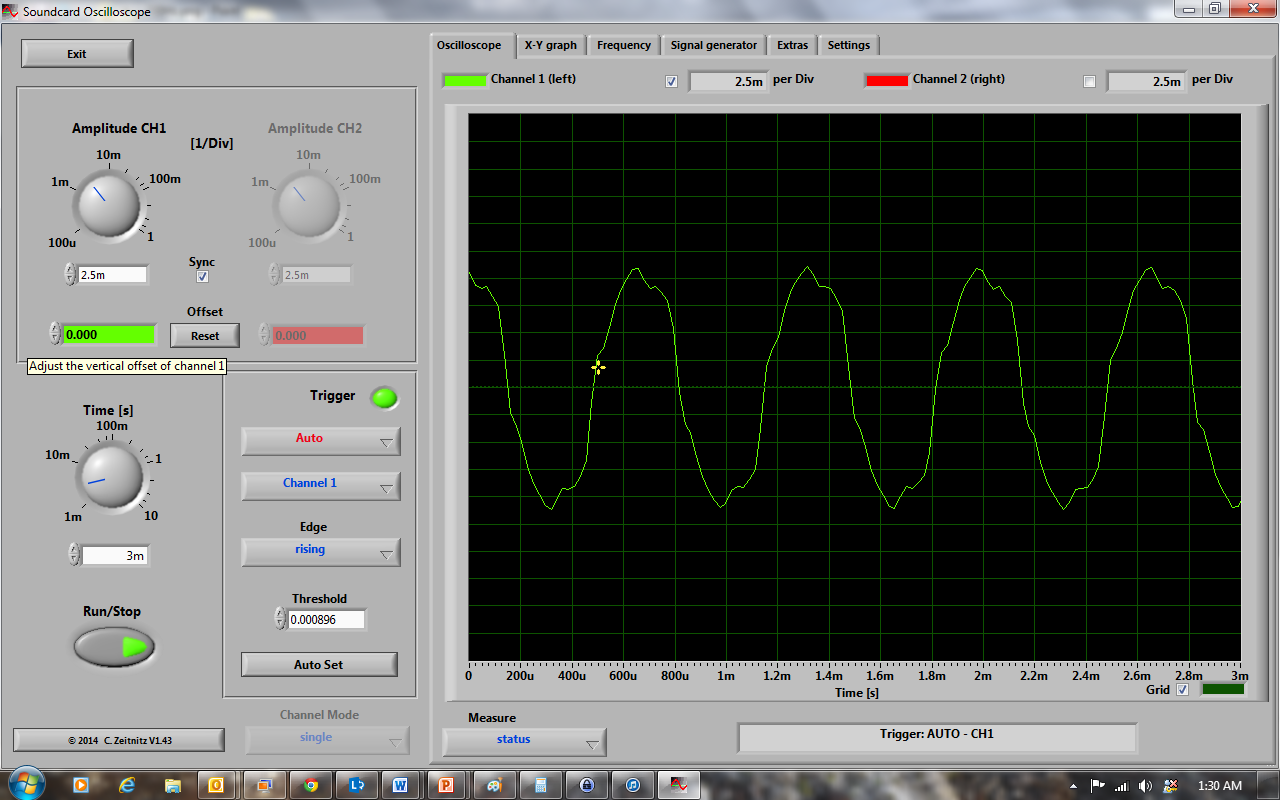
3000 Hz:
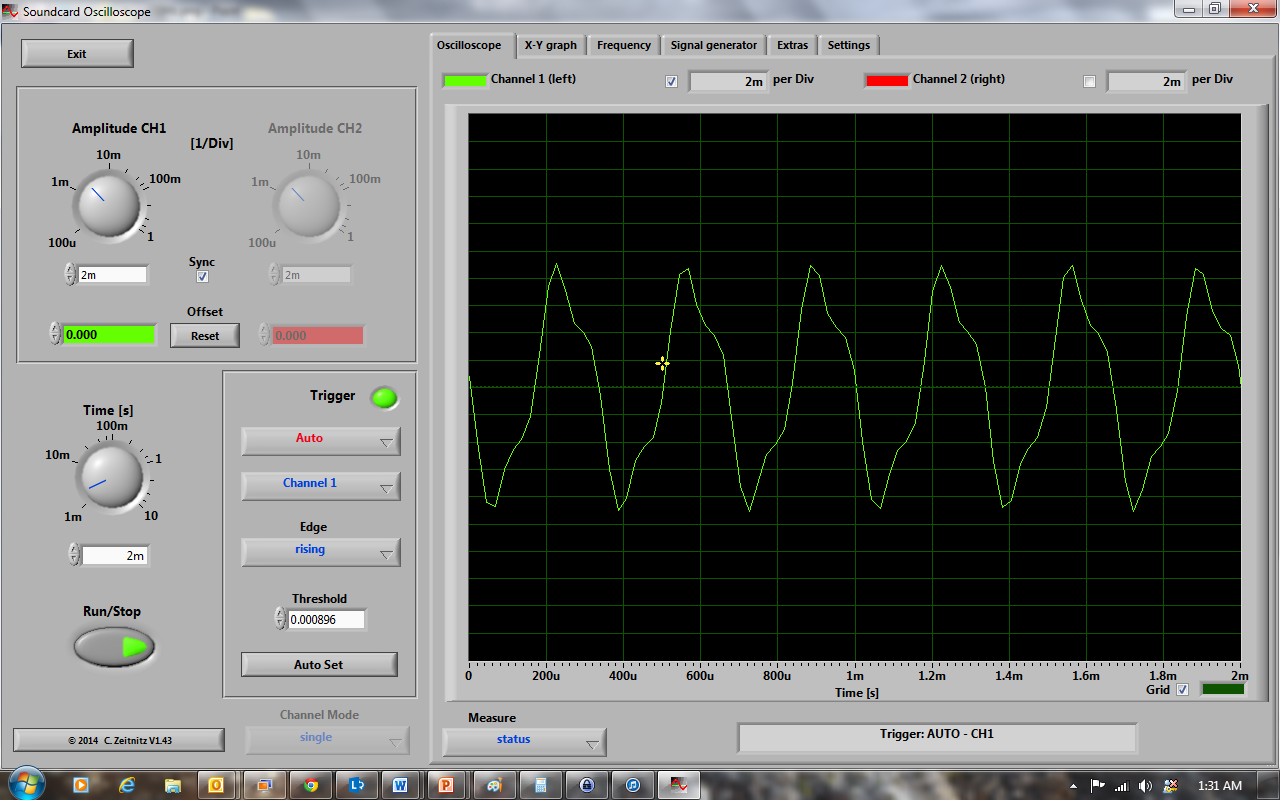
Similarly, this is straight from soundcard to TPA3116D2 amp (mo miniDSP). I moved the mic to the plane of the mouth exit. It seems to be better. This is just the 3FE22.
350 Hz:

700 Hz:

1500 Hz:

3000 Hz:

Attachments
Thanks X for the step response. You could also measure the step of the HF driver as well to see better where the woofers starts contributing. But the step look good to my eye. The excess group delay in REW is also a very revealing measurement.
The excess group delay in REW is also a very revealing measurement.
I am learning REW at the moment but haven't figured out what EGD tells me or how to interpret it. Care to shine a little light on how to do that?
I am learning REW at the moment but haven't figured out what EGD tells me or how to interpret it. Care to shine a little light on how to do that?
EGD down to 1kHz can be looked with 3-5ms time window, down to 100Hz with 10-20ms window and down to 20hz with 80-100ms window. I usually use those scales.
Line arrays that consist of separate full range drivers may show funny EGD plots due to multiple vertical arrivals caused time smear? At least they (multiple arrivals) change how we percieve the height and depth of the sound. Measuring line arrays, as all big speakers, is quite difficult and capturing and deducting the objective performance via measurements that correlates with listening can be challenging.
Last edited:
Thanks X for the step response. You could also measure the step of the HF driver as well to see better where the woofers starts contributing. But the step look good to my eye. The excess group delay in REW is also a very revealing measurement.
Here is the EGD corresponding to the earlier measurement showing the step response:
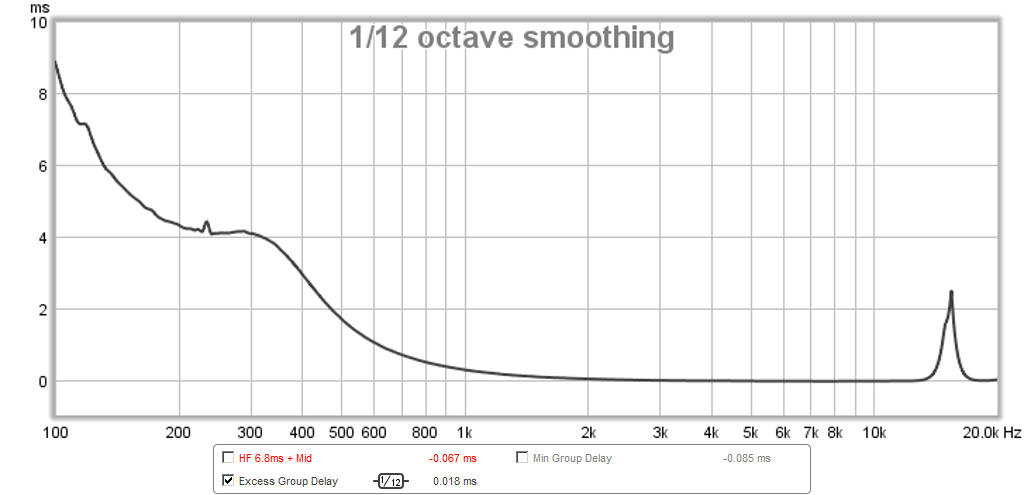
The steep XO slopes may be contributing to the rapid rise at 100Hz. I am running 48dB/oct slopes at present...
Attachments
Here is the EGD corresponding to the earlier measurement showing the step response:

The steep XO slopes may be contributing to the rapid rise at 100Hz. I am running 48dB/oct slopes at present...
Excellent result for multiway is around 0,2ms @ 1khz and under 1,5ms @ 100hz. Something like 3-4ms @100Hz is propably still good for jazz and most classical music, but the most accurate/punchy bass on anything more complicated is gone. Over 8ms@100Hz is higher than I have ever seen, that would be excellent amount at 20Hz 🙂. If that was the correct result... Measure at 1m or closer, no need to measure further away (EGD at least) with a "coaxial" (kind of) speaker that integrates well also up close.
Your steep slopes seem to contribute massive amount of EGD. I suggest you try 1st or 2nd order slopes, I have always thought they sound the best when corretly aligned. Why use 8th order slopes anyway, do you have trouble with power handling and/or extremely bad resonances right after the xo freq with the mids?
edit. The long warbling/waves in the step response could also have also been a "pre ringing" of the 8th order slope? The actual step of the mids might have been left out of the step response plot since it's time window was small. Just a possibility, I don't know the measurement specifics, or are these results correct. Alot can go wrong in measuring, time windowing and preventing the room from affecting the results.
Last edited:
Legis,
I am going to have to take a good look at my XO setup and DSP scheme. These were initial settings to get going. What was the EGD for your Synergy setup? As I recall you are running the Deltalites full range with no XO?
I am going to have to take a good look at my XO setup and DSP scheme. These were initial settings to get going. What was the EGD for your Synergy setup? As I recall you are running the Deltalites full range with no XO?
Legis,
I am going to have to take a good look at my XO setup and DSP scheme. These were initial settings to get going. What was the EGD for your Synergy setup? As I recall you are running the Deltalites full range with no XO?
Here's the picture I posted in "the other" thread before. This is basically the best I have gotten +/- .
An externally hosted image should be here but it was not working when we last tested it.
I'm thinking if I would benefit from testing/using a "phase plugs" in the Deltalites' front chambers to make them as small as possible. What do you think? I could propably squeeze out the chamber from ~4 litres to ~1...2 litres. I don't know if this would help the Deltalites to extend higher, but it's possible?
If they would extend higher, it would lessen the phase shift at xo freq (I could make the initial xo slope slower, and then it would steepen). Right now the Deltalites roll of around 30dB/oct exactly at 500Hz without any electric crossovers. Somehow the acoustical xo is very steep, too steep actually to get best time coherency and phase coherency at the xo freq at the same time.
It does not matter if the response rolls of because of acoustical, mechanical or electrical reasons, all crossovers/rolling off slopes will cause phase shift.
Last edited:
Legis,
I am going to have to take a good look at my XO setup and DSP scheme. These were initial settings to get going. What was the EGD for your Synergy setup? As I recall you are running the Deltalites full range with no XO?
Could it be that you adjusted the time alignment between the woofers and horn driver with the woofers one cycle behind the horn driver?
4 ms relates to about 136 cm and that would be one wavelength at 250 Hz, is the crossover anywhere near that? It looks to me like you made the woofers one cycle to slow at 250 Hz. 😕
It would be easy to get exact that with the time alignment method you used with the sine wave. In that case you could adjust the time alignment and try again...
Last edited:
Wesayso,
I think you may be right. I am off by exactly one cycle - there is probably a time delay due to the compression chamber and injection port that I am not accounting for. I measured the distance from the throat to the port but that is assuming a open radiator without additional time delay.
I think you may be right. I am off by exactly one cycle - there is probably a time delay due to the compression chamber and injection port that I am not accounting for. I measured the distance from the throat to the port but that is assuming a open radiator without additional time delay.
Should be an easy fix... I wonder how step response and square waves look like when you fix it. If it sounded good before it will be way better after the time alignment correction. The port would indeed cause more delay (band pass behaviour).
I apologise for the lack of updates! It's turning out to be a busy week, and sawing wood tonight would have woken the kids. Maybe I'll be organised enough tomorrow! 🙄
I did glue the top panel on yesterday, and the woofers arrived today, so I'll try to make progress when I can!
Thanks for the current research; I can't wait to apply the results on my meagre offerings!
I did glue the top panel on yesterday, and the woofers arrived today, so I'll try to make progress when I can!
Thanks for the current research; I can't wait to apply the results on my meagre offerings!
Here is the EGD corresponding to the earlier measurement showing the step response:.....
.....The steep XO slopes may be contributing to the rapid rise at 100Hz. I am running 48dB/oct slopes at present...
In picture 1/2/3 did electric simulation 8. orden BW XO 350Hz.
In picture 4 did simulation 2. order sealed for PartsExpress 6,5" woofer in 5,5 ltr. In reality 6,5" also frontloaded and injected into tractrix and therefor not same plot, but show the simple sealed anyway.
In picture 5 added those simulations (dots by hand) to the GD plot, seems some logic by the simulation if put the green and blue together, and the rest missing could be the added EQ by miniDSP.
Attachments
Last edited:
Byrtt,
Thanks for looking into that for me - it appears that the miniDSP low pass filter is causing some problems for me with the high order. I just ran the 3FE22 straight through an amp no miniDSP and got essentially flat (<0.5ms) EGD down to 100Hz so I know it must be coming from the digital XO and delays I have. The agreement you have compared to my data is very good.
Thanks for looking into that for me - it appears that the miniDSP low pass filter is causing some problems for me with the high order. I just ran the 3FE22 straight through an amp no miniDSP and got essentially flat (<0.5ms) EGD down to 100Hz so I know it must be coming from the digital XO and delays I have. The agreement you have compared to my data is very good.
2nd 0.70x Tractrix Build Begins
I have started on the second Trynergy and so far have completed the basic tractrix horn and sealed rear chamber with driver. Still need to apply CLD, add woofers, and make rear chamber for woofers. I am using the higher quality Elmer's foam core board this time. It is a much more durable and stiffer material than the dollar store stuff. More difficult to cut though.
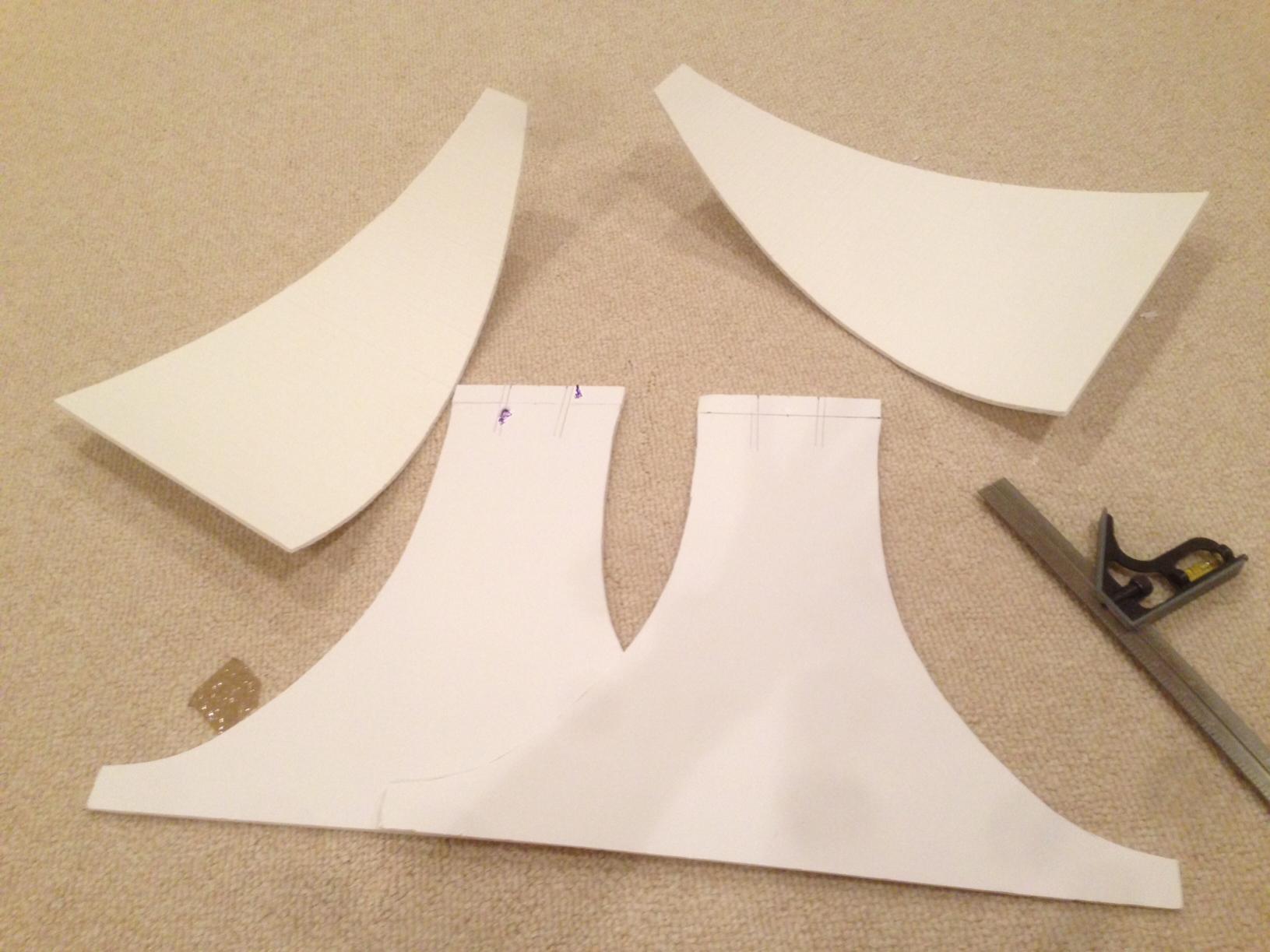
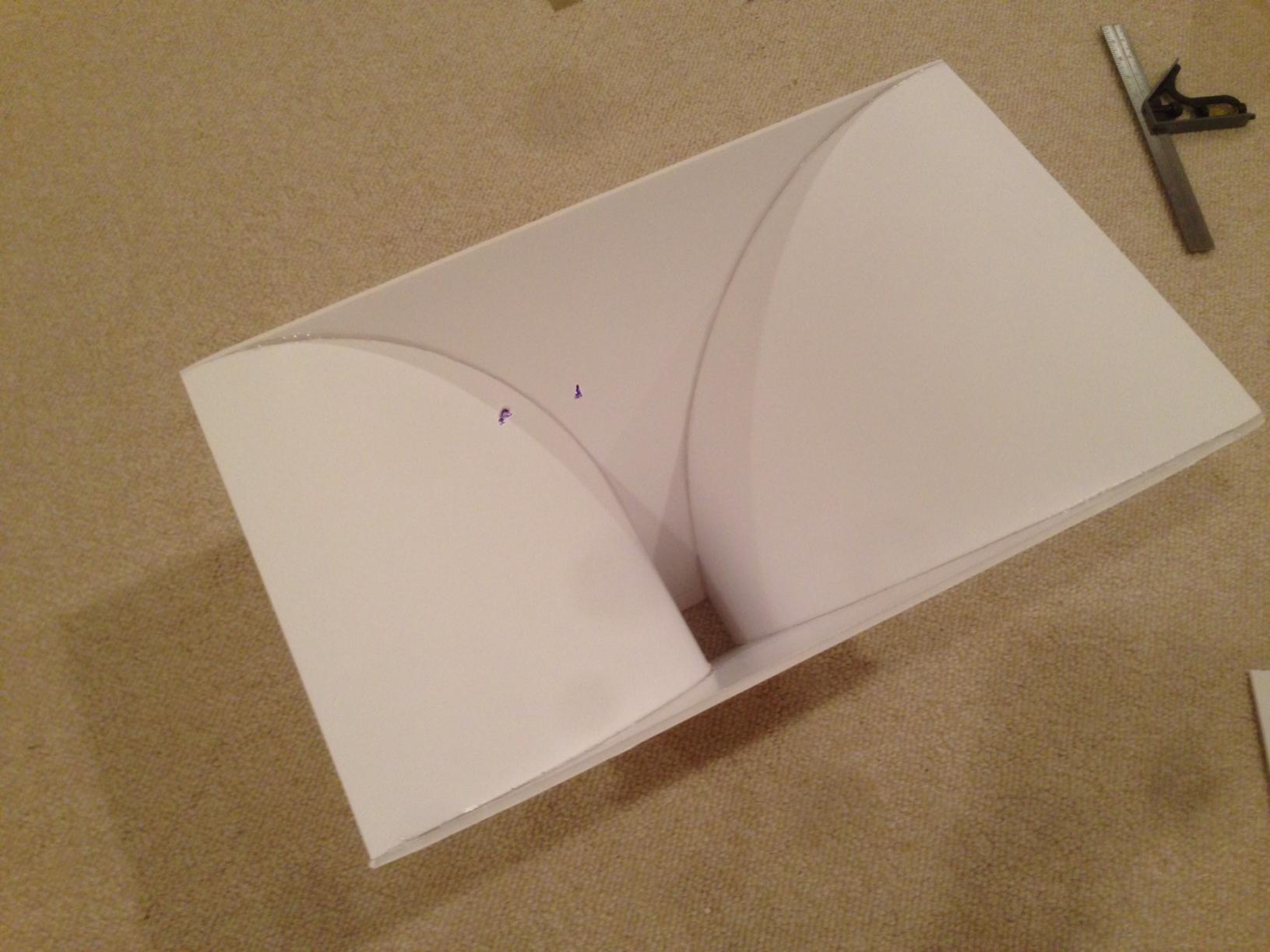
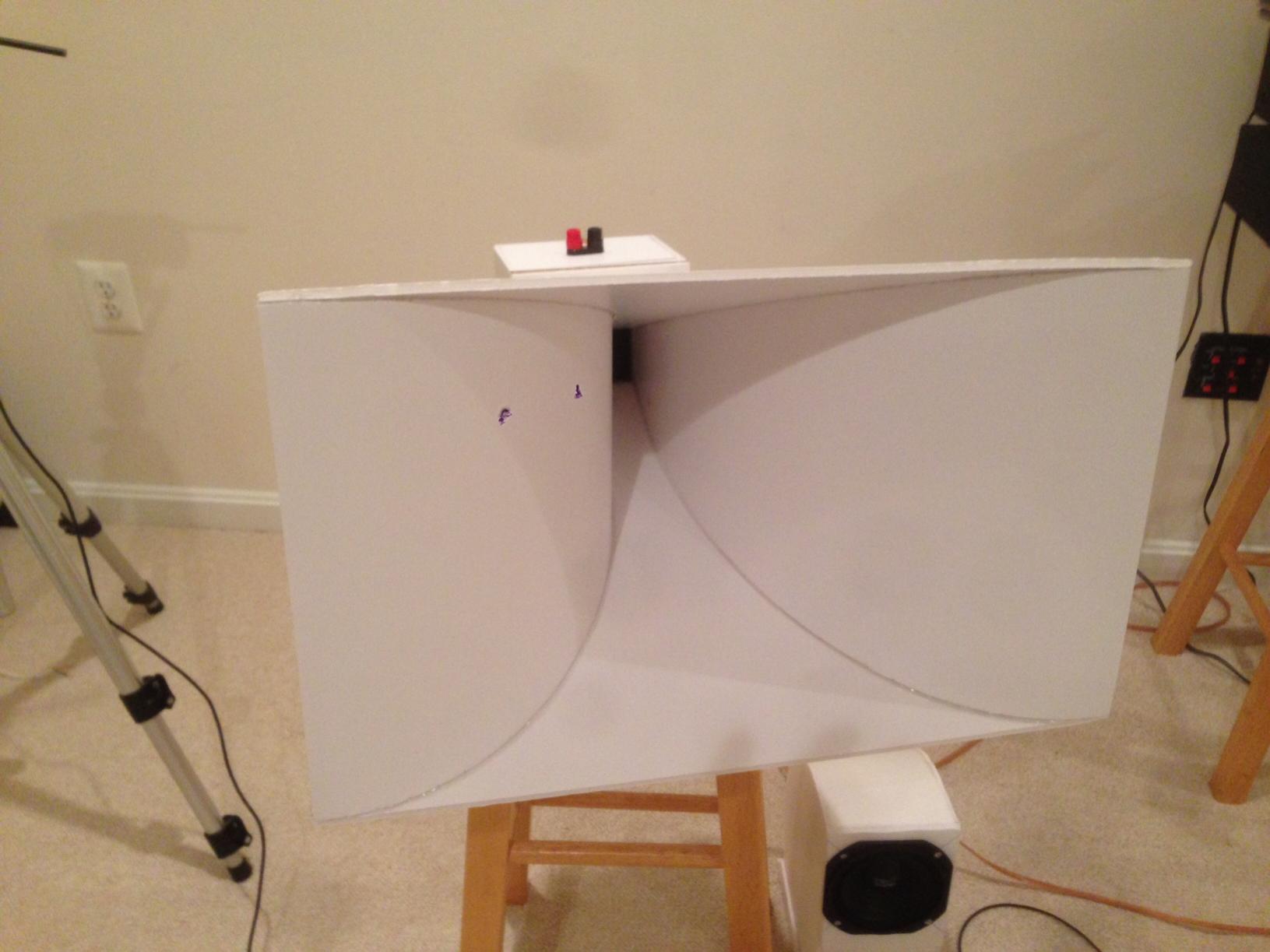
I have started on the second Trynergy and so far have completed the basic tractrix horn and sealed rear chamber with driver. Still need to apply CLD, add woofers, and make rear chamber for woofers. I am using the higher quality Elmer's foam core board this time. It is a much more durable and stiffer material than the dollar store stuff. More difficult to cut though.



Attachments
..........The agreement you have compared to my data is very good.

Can i mention that the bigger delay at 100Hz probably coursed by the 6mSec. spike from 6,5" because of high Q(tc) box. Legis did mention at the other thread when you added the woofers that you could make them leaking, maybe that trick could bring them down 2-3mSec. area.
Second Trynergy nearly born, good building....

In picture 1/2/3 did electric simulation 8. orden BW XO 350Hz.
In picture 4 did simulation 2. order sealed for PartsExpress 6,5" woofer in 5,5 ltr. In reality 6,5" also frontloaded and injected into tractrix and therefor not same plot, but show the simple sealed anyway.
In picture 5 added those simulations (dots by hand) to the GD plot, seems some logic by the simulation if put the green and blue together, and the rest missing could be the added EQ by miniDSP.
Byrtt,
How do you get Qtc of 2 for the woofers? Doesn't added foam damping and stuffing control Qtc? Also, the flex of the foam core enclosure also reduces the Qtc. I don't have a huge peak overshoot like the sim you show. The woofers don't use any EQ just the low pass and high pass.
Byrtt,
How do you get Qtc of 2 for the woofers? Doesn't added foam damping and stuffing control Qtc? Also, the flex of the foam core enclosure also reduces the Qtc. I don't have a huge peak overshoot like the sim you show. The woofers don't use any EQ just the low pass and high pass.
Did mention plot picture 4 not the reality what will happen when frontloaded and injected thru smaller openings here i'm blank.
In the plot used PE 6,5" in raw sealed 5,5 liter, neither did add filling or counted for driver displacement parameters. In my simulation program PE 6,5" in a 21 liter box per driver Qtc 1.302 still makes nearly +3dB spike. Grabbed TS parameters PE website, and just rechecked seems okay.
You don't have huge peak that's good, frontloading/injection, foam damping and stuffing, flex foam core that is doing it's job

That said picture-4 sim for PE 6,5" and the 100Hz GD agree your GD plot, you did a jig for REW some time ago can it measure where real Qtc have landed.
- Home
- Loudspeakers
- Multi-Way
- Presenting the Trynergy - a full range tractrix synergy.
